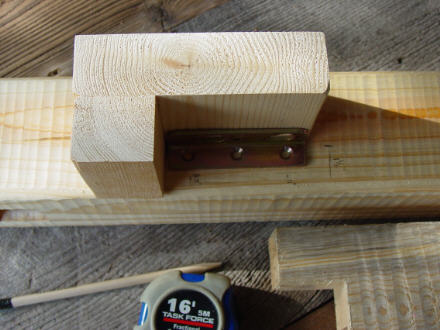Distressing Walnut
Tips for light distressing. January 9, 2007
Question
I have a customer that wants distressed walnut on their master bathroom cabinets. Has anybody done this before and if so, what techniques have you used to distress the walnut?
Forum Responses
(Furniture Making Forum)
From contributor B:
Forget the distressing for a minute. You are you going to need a serious amount of finish to protect the wood from all the steam from the shower. Otherwise, the "distressing" will be when the client calls you back in a couple of months to repair the water damage.
From the original questioner:
Good point. That is not a problem, though. I have remodeled a lot of bathrooms with wood in them. An excellent bath fan is the first step in fighting any moisture problems and then, of course, a good finish to protect the wood.
From contributor C:
First, define what your customer means by "distressed." Have them provide you with a picture or some form of reference. Second, walnut is not commonly used for rustic or distressed finishes... would a less elegant wood be acceptable to them? Butternut maybe? I saw a kitchen a few years back in a very light well grained wood and the homeowner was taking great pleasure in having me try to guess what wood it was. I was truly stumped... pun intended. Turns out it was bleached walnut! I almost cried. I politely told the customer I would not be working on the additions to their kitchen. Sorry - some woods were just meant to be left to their own character, and money doesn't always buy good taste. Maybe you can guide them to another wood once you define what look they really want. Why distress walnut? If they want an antique look, that of course is different and much better to create with aged topcoats and rub-throughs.
From contributor W:
On my most recent jobs, I have been working with knotty walnut and the customer and I have fallen in love with it. There was no manufactured distressing done, just the knots and color variations due to the lower grading of the lumber. With the grade of walnut already declining, it became a matter of economics for the customer if they wanted walnut at all. Once they saw a sample, they went nuts for it. I am going to start promoting more work in a knotty grade in all species as a result of these projects.
From the original questioner:
Yes, I agree that beating up walnut seems like a disgrace. I need to meet with the customer and see what kind of distressing they want exactly. The knotty walnut is a great idea. I will try to sell them on that.
From contributor C:
Knotty walnut is a brilliant idea. I would not have thought of that one. This is one of the great things about this forum, seeing the same things from different points of view. Well done, mate.
From contributor F:
I have worked in situations where distressing was done to give the work an antiqued look. I don't see what species has to do with anything. We sanded the work to the final grit and then used a piece of lava rock to make dents. As a guide to where the dents should go, look at old furniture or millwork and it becomes evident where the damage would take place naturally over the course of time. Outside miters in low areas would get hammered a little with a wooden mallet to mimic what happens in the real world. After the nicking and denting process, the work was dampened with a wet cloth and after dry, a light final sanding was given before the finishes were applied.
From the original questioner:
Thanks for the response. I think this is the look they are looking for. A little more worn, not beat the crap out of it. We will see.
